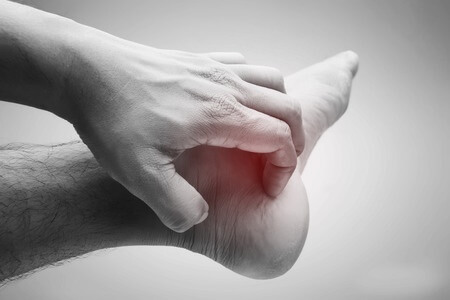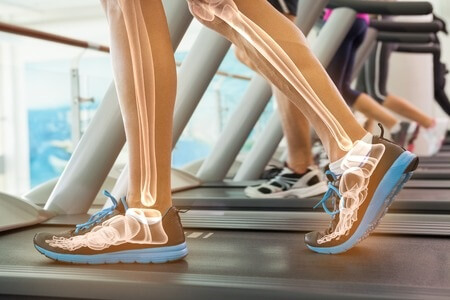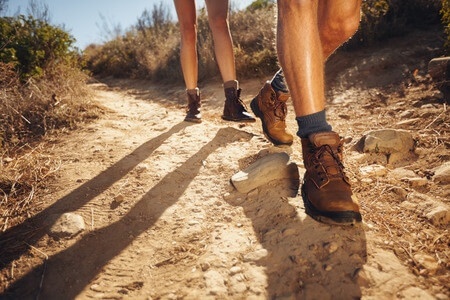Dallas (214) 340-8885
Athens (903) 677-9090
Gun Barrel City (903) 887-4341
Dallas (214) 340-8885
Athens (903) 677-9090
Gun Barrel City (903) 887-4341

Small, red, itchy, and sometimes painful bumps that cover an area of the skin on your feet can be uncomfortable and embarrassing. How and why did it develop and what can you do about it?
The first step in figuring out what is happening is to have our podiatrist take a look, especially if it won’t go away or gets worse. You should also try to think about anything you may have changed or tried for the first time. Have you come in contact with some poison ivy? Did you buy new leather shoes and sweat in them? Maybe you walked around barefoot in a locker room floor because you forgot your flip-flops?
There are several possible causes of rashes on your feet, including:
Perhaps your rashes didn’t develop all of a sudden, or for the first time. This time, however, maybe you noticed it more because it was worse than before, or maybe you just can’t take the discomfort and need better treatment options. This could be a chronic issue that affects your whole foot or all over your body.
If you are worried about a skin rash on your feet or ankles, consult with our podiatrist, Dr. Jonathan M. Kletz, at Texas Foot Works. He will assess your feet and ankles to properly diagnose what’s going on. Make an appointment today at any of our offices in Abrams (Dallas), Athens, and Gun Barrell City, TX!

What is that acronym, you might wonder. Does it have something to do with peanut butter and jelly? Well, actually, it stands for World Pediatric Bone and Joint Day! Continuing the theme of Bone and Joint Action week, tomorrow, October 19th is designated to raise awareness about how musculoskeletal diseases affect children. The reason is that 10% of those who have a disabling bone and joint problem are children. Additionally, some of the adults that are affected by musculoskeletal disease have been affected since childhood.
The focus of this year is on how obesity affects children’s bone and joint disorders. The best way to reduce the risk of long-term musculoskeletal problems is to take preventative measures when children are young. However, when children are obese, they are at higher risk of developing bone and joint problems, even while they are young. Much of the lasting problems can start as acute or overuse injuries to the growth plates in the back, hips, and legs (knock knees).
So how can you help your child? You can help them take some preventative measures and make sure that they get treatment for current problems. Here are some tips:
Have concerns about pb&j health? Consult with our podiatrist at Texas Foot Works, Dr. Jonathan M. Kletz. He will assess your feet and ankles for any musculoskeletal conditions that may affect them. Make an appointment today at any of our offices in Abrams (Dallas), Athens, and Gun Barrell City, TX!

Why the focus, specifically on bones and joints? Well, October 12th-20th is Bone and Joint Action Week! According to the US Bone and Joint Initiative, more than half of the population who are at least 18 years old have musculoskeletal conditions. So you can see why it’s important to talk about how we can take care of our bones and joints!
What are common musculoskeletal conditions?
Anything that affects our bones, joints, nerves, and soft tissues (muscles, ligaments, tendons) are musculoskeletal issues. These include: arthritis, osteoporosis, back pain, traumatic injury, spinal deformity, as well as childhood conditions.
How can you take care of your bones and joints?
Start now! The older you get, the more likely it is for your bones and joints to begin get weaker. When bones have low density, they are more at risk of breaking or fracturing. Cartilage can also wear down, causing problems with the joints, and ligaments and tendons can stretch or collapse, changing the shape and function of the affected body parts (e.g. adult-acquired flat foot).
Taking care of your bones and joints essentially comes down to two important factors:
Physical Activity
Have more questions about bone and joint health, especially as it relates to the 26 bones, 33 joints, and over 100 soft tissues that make up each foot? Consult with our podiatrist at Texas Foot Works, Dr. Jonathan M. Kletz. He will assess your feet and ankles for any musculoskeletal conditions. Make an appointment today at any of our Abrams (Dallas), Athens, and Gun Barrell City, TX offices!

The fall can be a good time for taking hikes. There are several parks and nature preserves in which you can enjoy a beautiful hike in the Dallas area. We’ve got some tips for caring for your feet, which we hope is informative for new hikers and hiking enthusiasts alike!
Wondering if hiking is okay for your feet due to pre-existing conditions? Got an injury while hiking? Consult with our podiatrist at Texas Foot Works, Dr. Jonathan M. Kletz. He will assess your feet and ankles for a proper diagnosis and provide quality foot and ankle care. Schedule an appointment today at any of our Abrams (Dallas), Athens, and Gun Barrell City, TX offices!